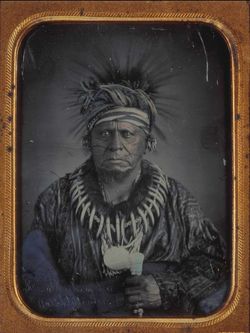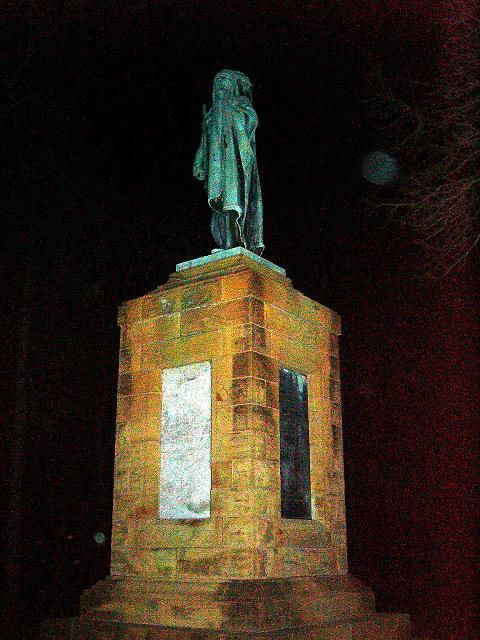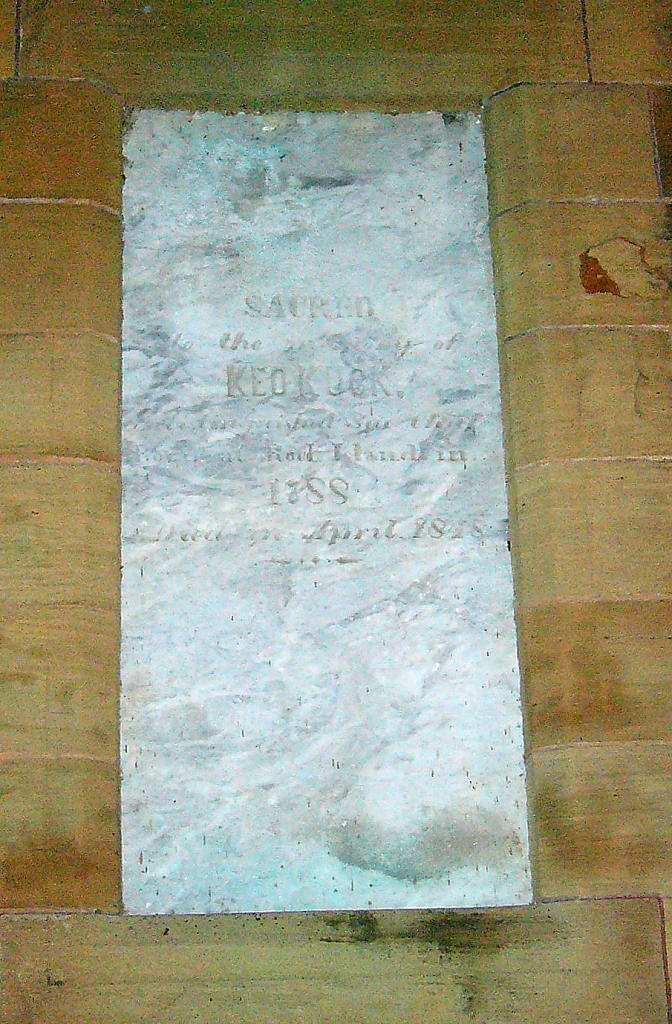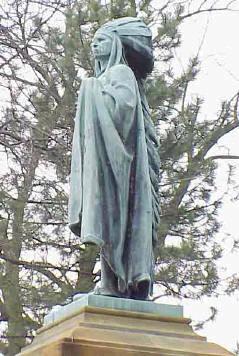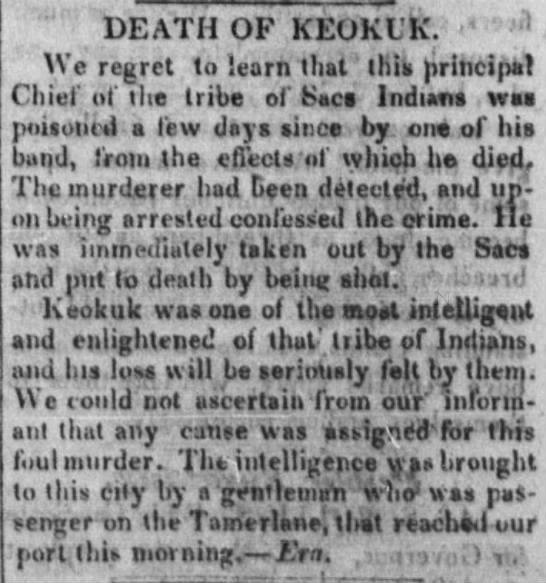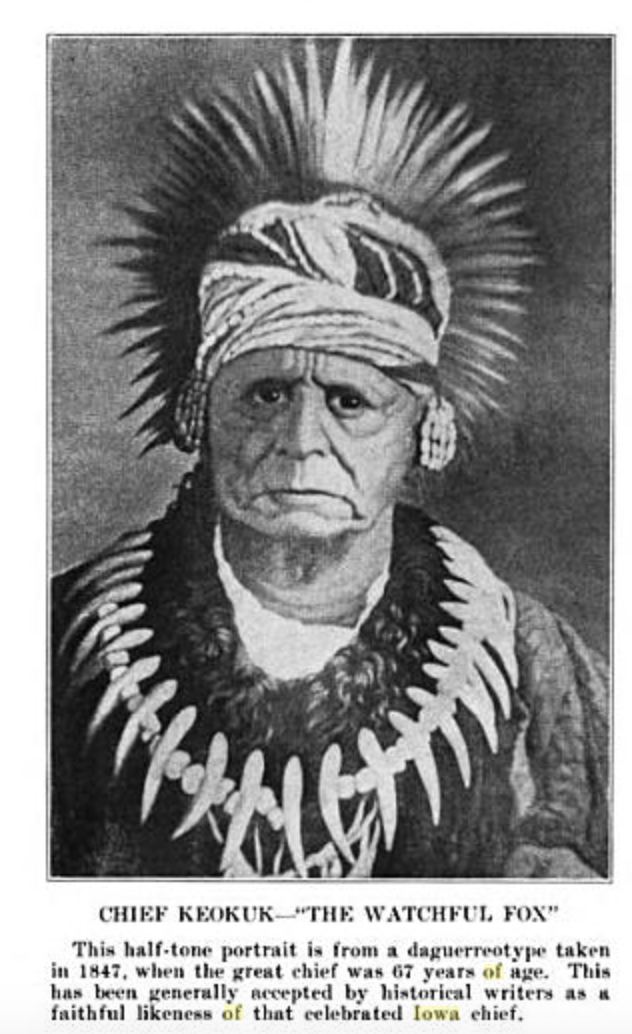Keokuk (1767–1848) was a chief of the Sauk or Sac tribe in central North America noted for his cooperation with the U.S. government which led to war with Black Hawk, who led part of their band into the Black Hawk War. Keokuk County, Iowa and the town of Keokuk, Iowa, where he is buried, are named for him. Keokuk, the principal warrior of the Sauks, is a shrewd politic man as well as a brave one and he possesses great weight of character in their national councils. He is a high minded, honorable man and never begs of the whites. While ascending the Mississippi to join us at the head of his brave troops, he met, arrested, and brought along with him to Fort Crawford two United States soldiers who were deserting from the garrison when he met them. I informed him that for this act he was entitled to a bounty in money, to which he proudly replied that he acted from motives of friendship towards the United States and would accept no money for it.
Chief Keokuk had not opposed the advance of the white men, and Keokuk and his followers eventually moved west of the Mississippi River. Although a four hundred square mile strip surrounding his village was exempted from the 1832 Black Hawk Purchase, he and his people were eventually moved farther, to a reservation in Kansas, where Keokuk died in 1848. In 1883 his remains were moved back to the town named after him and a monument by Nellie Walker erected there in 1913.
Keokuk (1767–1848) was a chief of the Sauk or Sac tribe in central North America noted for his cooperation with the U.S. government which led to war with Black Hawk, who led part of their band into the Black Hawk War. Keokuk County, Iowa and the town of Keokuk, Iowa, where he is buried, are named for him. Keokuk, the principal warrior of the Sauks, is a shrewd politic man as well as a brave one and he possesses great weight of character in their national councils. He is a high minded, honorable man and never begs of the whites. While ascending the Mississippi to join us at the head of his brave troops, he met, arrested, and brought along with him to Fort Crawford two United States soldiers who were deserting from the garrison when he met them. I informed him that for this act he was entitled to a bounty in money, to which he proudly replied that he acted from motives of friendship towards the United States and would accept no money for it.
Chief Keokuk had not opposed the advance of the white men, and Keokuk and his followers eventually moved west of the Mississippi River. Although a four hundred square mile strip surrounding his village was exempted from the 1832 Black Hawk Purchase, he and his people were eventually moved farther, to a reservation in Kansas, where Keokuk died in 1848. In 1883 his remains were moved back to the town named after him and a monument by Nellie Walker erected there in 1913.
